Burly scrap dealer Nick Kovalchick, 50, could hardly believe what he’d just bought.
Six steam locomotives, some still warm to the touch, dripped oil and collected dust in a turn-of-the-century roundhouse. Vintage coaches and hopper cars reposed on sidings, creaking in the breeze. A Victorian-era steam-powered, belt-driven machine shop begged for action in the dusty cathedral light of its silent interior. Scattered elsewhere in the complex were decades-old storage sheds, a 19th-century carpentry shop, a foundry, maps and posters and paperwork going back to the railroad’s construction in 1872, a 1790s-era stone farmhouse, and a cute-as-a-button train station.
The year was 1956, and Nick Kovalchick had just walked into a Pennsylvania time warp. But if anyone feared that he was going to scrap the place, they needn’t have worried.
“It was like the model railroad I never had as a boy,” he said later and on many occasions.
The East Broad Top, the oldest operating narrow-gauge railroad in the United States, had been rescued. Kovalchick went on to offer train rides to the public and tours of the railyard, sharing a rare bit of history-rich Americana with thousands of rail fans. Even after Kovalchick died in 1977 and his son Joe took over, volunteers continued to assist with track work and train maintenance. Families rode the rails on holiday outings. The belt-driven workshop thrummed as skilled wrights machined locomotive wheels, repaired couplings, and fabricated valves, crossheads, and connecting rods. The depot, always thronged with day-trippers, sold tickets, toys, T-shirts, and tchotchkes. The place hummed with energy.
But by 2011, the railroad faced overwhelming financial obstacles. The numbers just didn’t add up anymore. The train rides stopped, but the years rolled on. The railyard lay dormant. Rot ate at the building foundations, mice and squirrels nested in the gloom of the blacksmith shop, and shagbark hickory saplings sprouted between the red-oak railroad ties.
The East Broad Top — a National Historic Landmark since 1964 — was once again on the edge of extinction. But this time, there was no Nick Kovalchick waiting in the wings.
Central Pennsylvania is rippled by the rugged Appalachian highlands, a hardscrabble country of tough, religious mountaineers. Poverty defined the lives of the early inhabitants. But riches were to be found — some above the earth, others below: specifically, timber and coal.
The East Broad Top Railroad, or EBT, received its charter to operate in 1856, with the goal of reaching the coalfields and thick forests on Broad Top Mountain, some 30 miles southwest of the railhead through rough terrain. The Civil War and a dearth of financing, however, delayed construction until 1872. The line was built as a narrow gauge, the better to handle the curves and steep climbs of the surrounding mountains. (Standard gauge width is 4 feet 8 ½ inches; the East Broad Top narrow gauge is 3 feet.) The EBT won the contract to carry the U.S. Mail to and from the small settlements along the route after it added passenger service. An expanding logging business also contributed to the growth of the young railroad.
The Old Eastie, as it is affectionately known, built an extensive railyard in Rockhill Furnace, about 10 miles from the railhead at Mount Union, for train and track maintenance. Over the years, the EBT added machine shops, storage sheds, sidings and yard tracks, paint and blacksmith shops, a sandhouse, and a roundhouse. The complex was actually able to construct its own freight cars.
In 1874, the EBT tracks reached Robertsdale, a flyspeck of a sloping settlement with an abundant seam of semi-bituminous coal. New iron mines were being carved from the mountains along Blacklog Creek, not far from the railyards at Rockhill Furnace. A blast furnace was built there in 1876 to take advantage of the increased iron production. That blast furnace needed coal, lots of it. And the East Broad Top knew how to carry coal.
For the next 80 years, the EBT conveyed customers, toted timber, managed the mail, and carted coal along its 33-mile length.
But to every thing there is a season. Iron products dropped out of fashion with the widespread adoption of the Bessemer steel process in the late 19th century. By 1908, the furnace at Rockhill was obsolete.
In the ensuing decades, the growth of abundant oil and natural gas increasingly shunted coal to the wayside. After World War II, coal use sputtered and faded like embers in an unstoked furnace. The need for a feisty narrow-gauge railroad to haul the shiny black hunks of fuel from the mountain mines diminished. The East Broad Top’s denouement was being played out.
The 1950s were especially sorrowful years for the Old Eastie. In 1953, the Post Office began carrying mail by truck; the EBT lost the federal contract and, as a result, stopped carrying passengers. And then the final gavel rang out: The railroad filed for abandonment in 1955.
The EBT’s massive Mikado No. 17 steam engine made its final run to the main line in Mount Union on April 6, 1956. Three weeks later, the entire operation — locomotives, rolling stock, offices, equipment, roundhouse, station, the whole kit and caboodle — was sold to Kovalchick Salvage Co.
Fast forward 55 years: In 2011, despite the Kovalchick family’s passion and efforts, the Old Eastie once more faced financial failure, without a savior in sight.
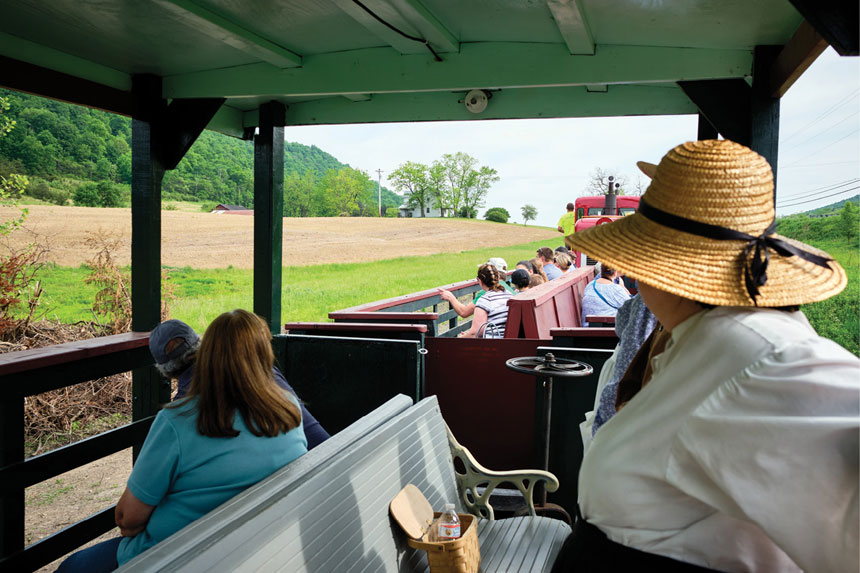
I’m passionate about trains. When I learn that the East Broad Top Railroad (eastbroadtop.com) has been rescued yet again, and has its first full-steam-ahead season in 2023, I make plans to drive from my home in New York’s Hudson Valley to Rockhill Furnace, 275 miles away.
There I meet Jonathan Smith, the line’s marketing director and himself a former steam-engine fireman. He’s outside the station busily selling tickets, and making a concerted effort to get one time-pressed visitor to take a tour of the railyard in addition to a train ride. “We’re a small organization,” he explains.
What is someone with the lofty title of marketing director doing selling tickets? “We all have to wear a lot of hats,” he tells me.
That organization is the nonprofit EBT Foundation, which, like Nick Kovalchick all those years ago, swooped in to rescue the East Broad Top Railroad from an ignominious finale to its long and storied history. The group, whose backers include a former Amtrak CEO and other well-heeled rail aficionados, presented the plan to revive the line to Joe Kovalchick in 2019. He liked what he saw. On Valentine’s Day 2020, the foundation completed its purchase of the railyard, along with 27 miles of the original 33 miles of track.
None of the six engines was in a condition to be used. The tracks were overgrown and undermaintained. Buildings needed to be restored, some even needing new foundations. But the biggest job that lay ahead was the restoration of the railroad itself. “We had to replace ten thousand ties,” Smith says. “We had to do all the brake work and mechanical work on the engines. We had to raise buildings out of the ground to stabilize them. We evaluated all the engines, and felt that No. 16 was in the best shape.”
The first operating year in the Foundation era was an abbreviated season in 2020, but without steam. “We did a very limited, one-mile run that August,” says Smith. “In 2021, we used a diesel on three miles of track.” In 2022 they added more passenger cars, and in future the plan is to refurbish and use the full 27 miles.
The Foundation finally reintroduced No. 16 in 2023, making it “our first full-steam-ahead year of service,” says Smith. (Note to rail geeks: No. 16 is a 2-8-2 Mikado steam locomotive built by Pennsylvania’s Baldwin Locomotive Works in 1916 and for which the original EBT paid $16,000.)
I’d hoped to see Old No. 16 in action, but on the day of my visit, it is scheduled for maintenance, so we’re pulled by the M-7, a muscular, chunky-looking General Electric diesel center cab built in 1968 for Algoma Steel of Sault Ste. Marie, Ontario.
I’m introduced to Larry Fuchs, our engineer, and I ask if his compartment on the M-7 is comfortable. Somehow I’ve always imagined train-engine interiors to be rough but cozy, with cushioned seats and maybe a pot of coffee keeping warm on an electric burner.
“No,” he says with a laugh. “There aren’t any springs in the seat. It’s noisy and bumpy. But that’s all right,” he says. “I like it anyway.”
The train ride is short, just four and a half miles each way. Mostly the views are of farms, fields, and forests. Inevitably, though, life in the 21st century pokes through. A new strip mall can be seen on the highway that parallels the tracks part of the way.
At Colgate Grove, marked by a large stand of trees, soon to be enhanced with a pavilion and dining area, we turn around for the trip back. In the future, passengers will be able to disembark here for a picnic and return on a later train.
We motor past a stretch of open pastureland known as Ferry’s Farm. The calming view of tall waving grass is backed by rolling green hills.
Nearing the depot, we pass through the tiny borough of Rockhill Furnace. “This town is generational,” says Smith. “Their dads worked for the railroad, their grandfathers worked for the railroad. This railroad has been part of the life here for 150 years.”
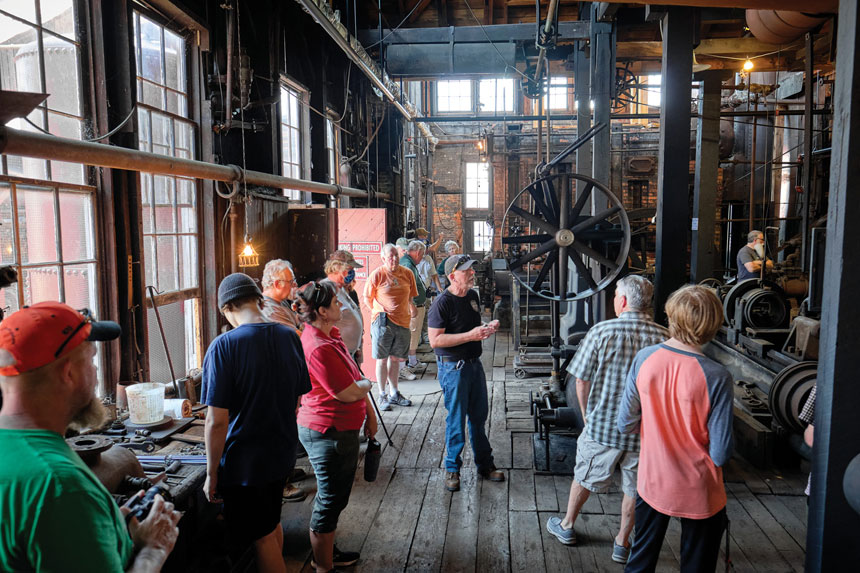
I enjoy our train ride, but I’m just as fascinated to tour the railyard, with its curious buildings, odd heaps of smoking ash, and overwhelming sense of yesteryear. “The wonderful thing about the East Broad Top,” Smith says, hopping over sidetracks and veering around gravel piles as we head to the works, “is that it’s frozen in time.”
Turning back the clock is part of the Foundation’s goal. Plans for expansion are focused on reopening the line to the southwest, past the country villages, through the disused mountain tunnels, and up the steep climbs toward the old coal mines, eventually directing the trains to the very end of the narrow-gauge tracks in Robertsdale. The 21st century doesn’t intrude much in those parts.
“We aren’t sanitizing it for you,” says Smith as we walk around the deserted yard. “We aren’t ever going to remove the grit and grime.”
The old, nonworking steam engines are stored in a mechanical station called a roundhouse. Just outside, on a giant turntable, No. 16 is going through its routine 30-day safety and upkeep inspection.
From the roundhouse, Smith leads me to other buildings: a carpentry shop, the freight office, the old stone house. The shop buildings, or portions of them, date from the 1870s, and look every bit as old. The machine shop is the most evocative of all. Dozens of ancient contraptions — lathes, drill presses, planers, punch and shears, sheet metal rollers, cutters, mills, and tools that aren’t even manufactured anymore — are activated by a Rube Goldberg-like cat’s cradle of leather belts and line shafts running overhead and down to each individual apparatus.
“You’re standing in what is the largest belt-driven machine shop in the country,” says Smith. “There are others, but none are this large or intact.”
Onward we go, exploring. Suddenly, I am 12 years old.
“The blacksmith shop is presently in a state of arrested decay,” Smith tells me as we enter the eerie, unrestored, hundred-year-old interior. Cloud-covered sunlight barely creeps in through the windows and gaps in the plank walls.
Out of nowhere, a partially open door on the far side of the room slams shut. Boom! It’s unnerving. “I believe in ghosts,” Smith says. “I do. And this place is haunted.”
As I stand there in the bewitching twilight of history, I can’t help but agree.
Mark Orwoll is a journalist, lifelong train buff, and author of the new thriller Cross Purposes. His work has appeared in Conde Nast Traveler and Town and Country, among others. For more, visit markorwoll.com.
This article is featured in the March/April 2024 issue of The Saturday Evening Post. Subscribe to the magazine for more art, inspiring stories, fiction, humor, and features from our archives.
Become a Saturday Evening Post member and enjoy unlimited access. Subscribe now
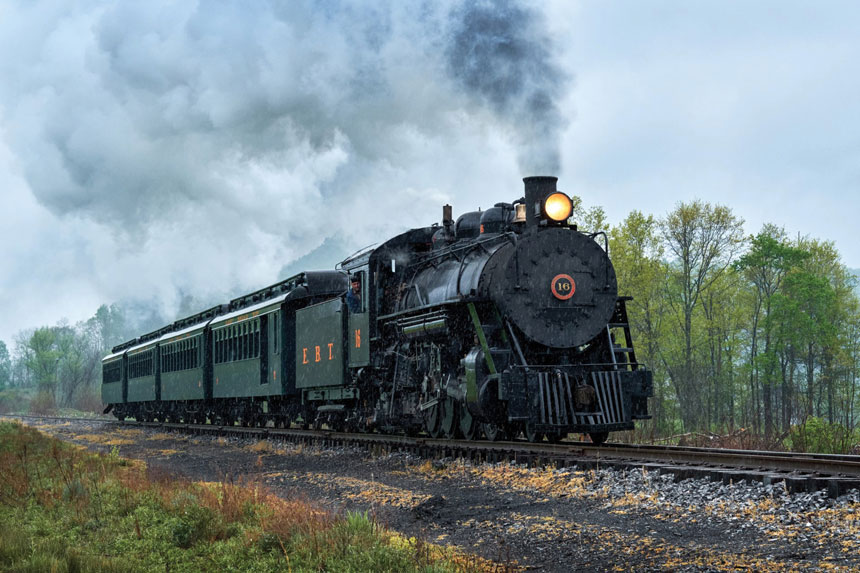
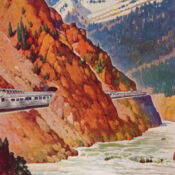

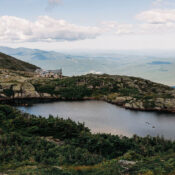
Comments
Back around 1960, I stopped in at Rockhill Furnace on my way to college in West Virginia. I rode the steam-hauled train and wrote in a guest book, “On to Robertsdale!” During the last 60 years, I visited the EBT numerous times. The most memorable visits were in winter when EBT ran double (and triple!) headed trips in picturesque snowy weather. More recently, when EBT was not in operation, I wandered around the grounds and thought to myself, if only some people with a LOT of money would buy it and bring it back to life!
They DID! And othey even plan to bring the entire line back into operation!
And l I only hope that I live long enough to fulfill the hope I had back in what I now call the “Middle Ages”.
What a great story. Many thanks to the Kovalchick family for saving this treasure for future generations.
Also to Charles “Wick” Moorman, Henry Posner and Bennett Levin for their labor and leadership in establishing the foundation.
I agree with Bob. We don’t want to lose and forget this vital piece of history. Case in point, I remember when trains made regular daily runs up and down Sequatchie Valley, TN connecting towns and communities for along the way, including Pikeville, Lee Station, College Station, Pailo, Mt Airy, Dunlap, Daus, Cartwright, Whitwell and so on. Fortunately, I remember many of the trail depots before they fell into disrepair and/or were burned or torn down. I remember the trains, tracks, and bridges along the way and one major accident that once occurred spilling bushels upon bushels of corn harvested for market. Sadly, the trains, tracks, bridges, exist no longer and there are little or no evidence of where the depots once stood. I credit my daughter paying homage to the memory of the Sequatchie Valley Line with the naming of her store, Local Depot in downtown Dunlap. I encourage anyone travelling through this beautiful valley to drop I and pay her a visit.
Anything and everything must be done to save the rails. It’s an important part of our American heritage that must be preserved. We’ve lost too much of it otherwise, to lose this too.